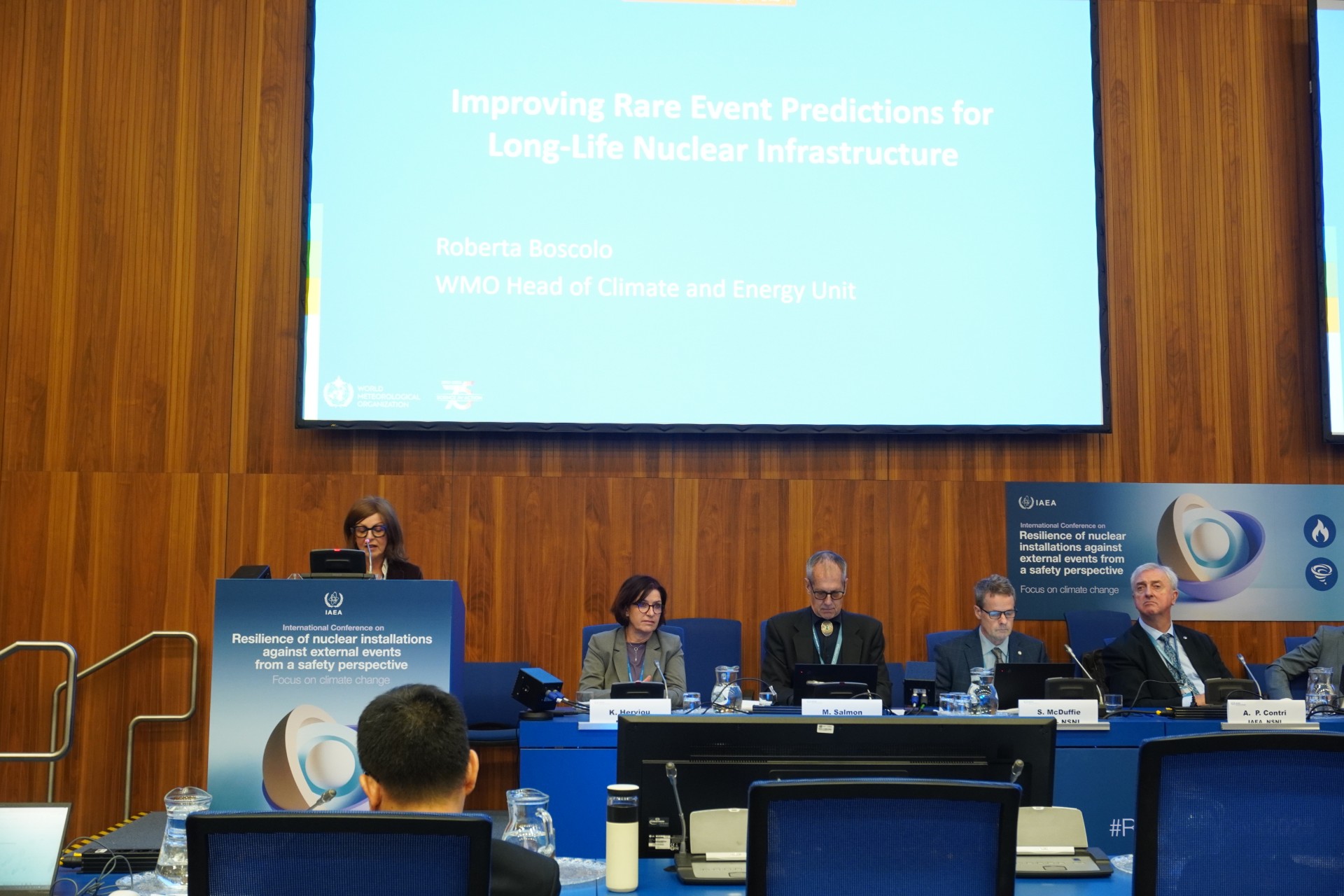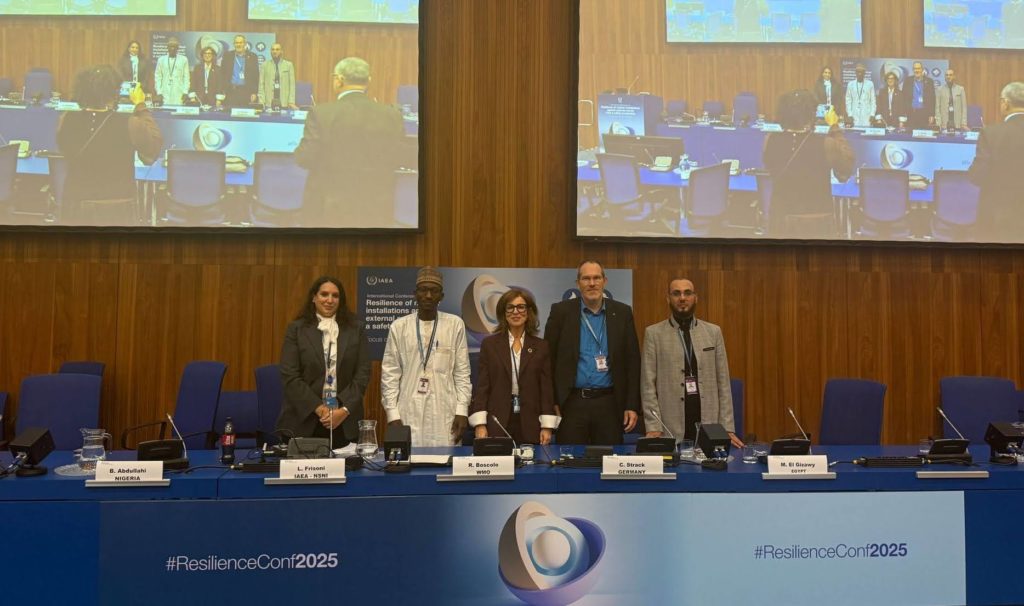In a world increasingly shaped by extreme and compounding hazards, the resilience of our energy systems is a defining challenge for this century. From unprecedented heatwaves to record floods and tropical cyclones, the safety of long-life facilities such as nuclear power plants and waste repositories depends on how well we can predict rare events and quantify uncertainty.
That is why the World Meteorological Organization (WMO) was invited to join the International Atomic Energy Agency (IAEA) at its International Conference on the Resilience of Nuclear Installations against External Events from a Safety Perspective, held in Vienna from 20 to 24 October 2025. The conference convened hundreds of scientists, engineers, and regulators to explore how evolving climate and environmental conditions affect the design, operation, and long-term safety of nuclear installations.

Since the adoption of IAEA Safety Standards (SSG-9, SSG-18, SSG-68), the nuclear sector has recognized the importance of natural-hazard assessment for siting and design. However, many of the reference datasets and models that underpin these assessments were developed under the assumption of stationary climate conditions—an assumption that no longer holds. As climate extremes grow in frequency and severity, climate science offers the data, models, and predictive capabilities needed to revisit design envelopes and strengthen risk assessments. WMO’s contribution to this conference was to highlight how its global observing systems, reanalysis products, and ensemble climate projections can inform the identification of low-probability, high-impact hazards.
In the closing high-level panel, titled “The Path Forward to Safer Clean Electricity Production – Challenges Moving Ahead,” Roberta Boscolo, WMO Head of Climate and Energy Unit, was invited to share WMO’s perspective on what the science community is doing to improve predictions and reduce uncertainties for rare high-impact events.
During the discussion, Roberta Boscolo emphasized three priorities for the scientific and regulatory communities:
- Invest in multi-source data integration, combining ground observations, satellite products, and reanalysis datasets to better characterize extreme meteorological and hydrological events with higher spatial and temporal resolution.
- Adopt ensemble and storyline approaches. Large multi-model ensembles and physically consistent “storylines” help explore the tails of probability distributions—critical for infrastructure designed to last a century or more.
- Co-design climate intelligence with engineers and regulators. Translating scientific uncertainty into design margins requires continuous dialogue between model developers, safety authorities, and industry. WMO’s collaboration with IAEA provides the institutional bridge for this integration.

Global cooperation is essential, but resilience ultimately starts at the national scale. National Meteorological and Hydrological Services (NMHSs) are the operational backbone for observing, forecasting, and analysing weather and climate hazards. Closer engagement between NMHSs, nuclear regulators, and plant operators can ensure that site-specific hazard assessments draw on the best available data, early-warning systems, and climate projections. By fostering these partnerships, countries can transform climate information into risk-informed design, licensing, and operational practices, enhancing both safety and confidence in clean-energy production. By bringing meteorological expertise into siting, design, and safety assessment, we can evolve from static, conservative assumptions to dynamic, risk-informed decision-making frameworks.
This means moving beyond deterministic thresholds toward probabilistic resilience metrics—quantifying not just the magnitude of hazards but also the confidence in those estimates. It also means embedding adaptive safety reviews throughout a plant’s lifetime, allowing designs to evolve as predictive science advances.
Resilience is not only about resistance—it is about learning, adapting, and evolving with the climate system itself. WMO stands ready to work with the IAEA and Member States to ensure that every investment in nuclear energy is also an investment in climate intelligence and long-term safety.
